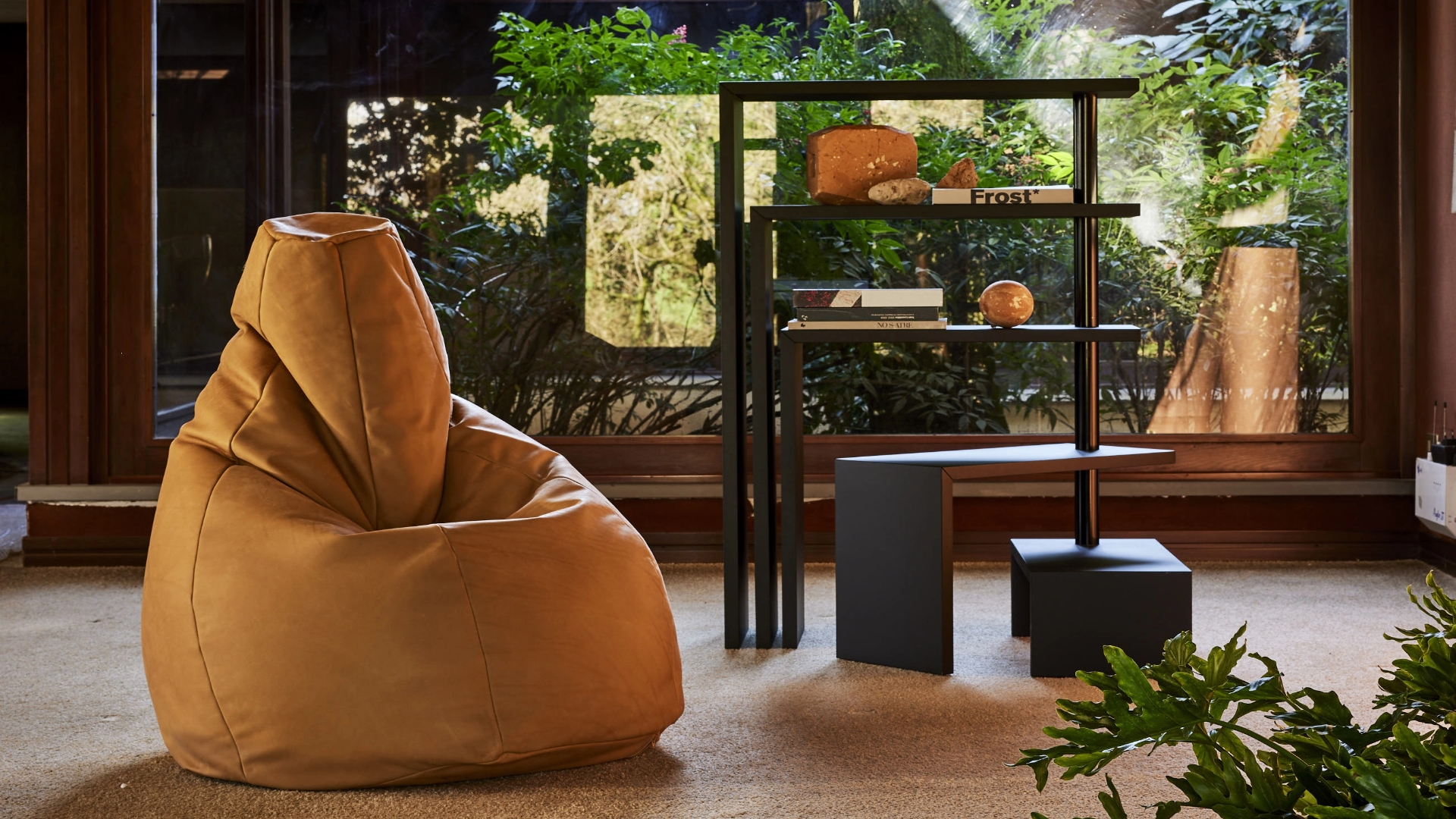On creativity and decidedly unique objects, the marriage of art with fine artisanship, and all new alchemies
A story with distant origins brought Zanotta, nearly forty years ago, to strike out on the courageous and innovative adventure behind the “Edizioni”. Courageous, in wake of a catalogue that had long since found the energy and pride to set records (as was the case with “Mezzadro”, “Sella” and the “Quaderna” series), and innovative, as founder Aurelio Zanotta had always wanted, as it manages to grasp the inherent unconventionalism suggested by objects such as the armchairs “Blow” and “Sacco”. The story of Zanotta is that of a company which successfully built an entire collection which was far from conventional, envisioned by starting from different influences, and gradually venturing towards increasingly free explorations, and also, perhaps most importantly, fostered by a dialogue with contemporary art. This story draws from the cultural wealth of Italy, which can boast several great transdisciplinary masters who were capable of competing contemporaneously – with talent, audacity and vision – in the realms of architecture, painting, sculpture and installations, fashion and furnishing elements, thus contributing to the renewal of the world of design through linguistic accelerations, decorative reflections and ingeniously elevated exemplars.
The story of “Zanotta Edizioni” is born from sensing that through the renewal of formalized design in the early ‘80s there was a chance to open towards a different future, still unwritten, with a whole new lexicon and a more liberal dictionary. This is why it embraced the evolution of thoughts of the “Alchemy” group – a creative lab founded by the siblings Adriana and Alessandra Guerriero, and fostered by the intelligence of Alessandro Mendini – which reached maturity by becoming a “New Alchemy”: a significant initial moment in which, under the name “Zabro”, they proposed a proper “division” within the company for promoting and sustaining personalized gestures through which the author invited the user to “make their selection based upon sensibility, to discover themselves, and therefore enter the enchanted circle of intellectual ease and go beyond the habitual laziness of their sensations, beyond the routine of their psycho-sensorial reflexes…”, as written by Pierre Restany. And it is certainly no coincidence that an art critic highlighted these characteristics in the early stages when the company consecrated their opening towards the visual arts. Since the “Zabro” collection, which eventually became “Zanotta Edizioni”, is clearly a catalogue of works of art in the form of furnishing elements, a collection of “firsts” acquired by renovating the most traditional items to accompany our everyday domestic life, to prove that a chair, a dresser, a table…can always be looked at in a new way (as Bruno Munari might have repeated in his mantra, “But can it not be done in a different way?”), a departure from tradition which all too often declines into obviousness: a series of possibilities – so strong and successful that they still look new to this day – gained by taking less travelled roads, to meet the requirements of everyday life, while offering amazement and smiles.
Designs intended as works of art, and as such, “functional sculptures” which seek to push their original uses a bit farther, towards the particular field of action where their logically rational form gets accelerated by a burst of speed or a side swerve. In these designs, different languages can be heard clearly, and other approaches are dared, also by taking advantage of another Italian pre-eminence, the know-how of fine artisanship. In fact, each of these expressive explorations is supported by their evidently masterful construction: knowledge from another era which allows these objects to appear surprising, even in terms of the craftsmanship, with accents and decorations that are nothing short of exceptional, details which give added value to the overall result of these “objects of poetic reaction”.
These are small objects, in limited series, dedicated to those who know how to distinguish originality from replicas, representing the search for what has never been seen, yet with a reassuring tone. Pure experimentation, free of results which are already known or repeatedly attained. Due to its “great cultural significance”, the collection was recognized with an Honourable Mention at the Premio Compasso d’Oro. These are habitual actions in the home of “Zanotta Edizioni, host to the essence and substance of a new contemporary conception, as expressed by multifaceted architects such as Alessandro Mendini, Ettore Sottsass and Andrea Branzi, as well as creatives who are hard to classify, like Bruno Munari, Fortunato Depero, Corrado Levi and Riccardo Dalisi, and by pure artists drawn by the possibility to breach from their habitual actions, such as Alik Cavaliere, Alfredo Pizzo Greco and Joe Tilson.
"Beppe Finessi"
.jpg)
.jpg)
.jpg)
.jpg)
.jpg)
